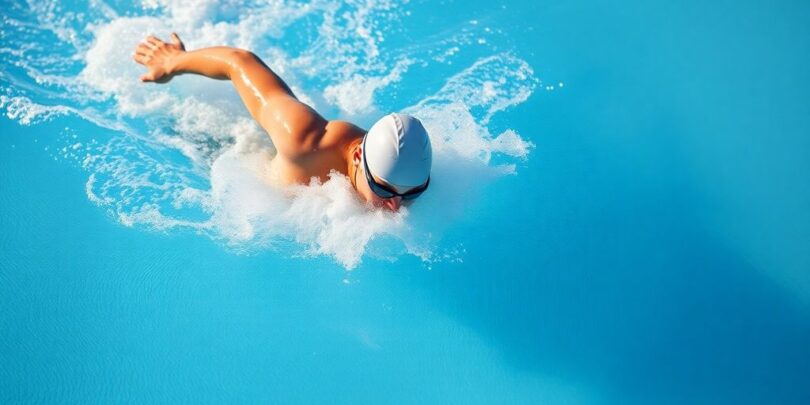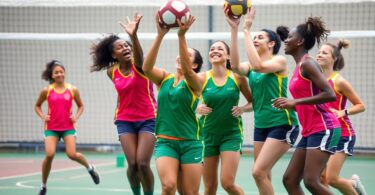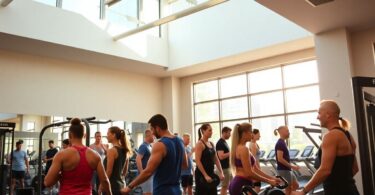G’day swimmers! Ready to stop just paddling and start truly mastering the water? If you’re looking to shave seconds off your times and feel more powerful in the pool, you’ve come to the right place. We’re diving deep into the world of advanced freestyle drills for advanced swimmers, going beyond the basics to fine-tune every aspect of your stroke. Think of it as upgrading your swimming software – making everything smoother, faster, and way more efficient. So, grab your goggles, and let’s get ready to make some serious waves!
Key Takeaways
- Focus on optimising your body position to slice through the water with less drag.
- Develop advanced breathing techniques for a more rhythmic and efficient stroke.
- Refine your arm pull and kick for maximum power and propulsion.
- Integrate dryland strength and flexibility work to support your in-water performance.
- Utilise structured practice, mental preparation, and technology to track progress and achieve peak performance.
Refining Your Freestyle Stroke Mechanics
Alright, let’s get down to the nitty-gritty of making your freestyle stroke sing. It’s not just about moving your arms and legs; it’s about how you position your whole body in the water and how efficiently you breathe. Think of it like tuning up a race car – every little adjustment makes a difference.
First up, body position. You want to be as streamlined as possible. Imagine you’re a torpedo, cutting through the water with minimal fuss. This means keeping your body relatively flat, but with a slight downhill angle from head to toe. Your hips should be high, not sinking, which is a common issue. A strong, engaged core is your best mate here; it keeps everything aligned. When you’re not breathing, your head should stay relatively still, looking down, while your hips and shoulders do the rolling. This stops that side-to-side head wobble that kills momentum.
Here’s a quick breakdown of what to aim for:
- Head Position: Look down, not forward. Keep it neutral.
- Core Engagement: Keep your abs tight. This is non-negotiable.
- Hip Position: High and buoyant, not dragging.
- Body Roll: Smooth rotation from your hips and shoulders, not just your torso.
Trying to balance your body while maintaining that downhill float might feel tricky at first. It’s all about core stability. Be patient with it; it takes practice to get both skills working together smoothly.
Breathing in freestyle can feel like a juggling act. You need air, but you don’t want to disrupt your stroke. The key is to rotate your body, not just your head. When you breathe, turn your head to the side, keeping one goggle in the water. This rotation comes from your hips and shoulders, which you’re already working on. Try to get your breath in quickly and then return your face to the water, maintaining that downhill position. It’s about finding a rhythm that works for you, maybe every two or three strokes. Don’t hold your breath; exhale steadily underwater. This makes inhaling easier and keeps your stroke consistent. For some great tips on building confidence in the water, especially if you’re new to it, checking out adult swimming lessons can be a real game-changer.
Your arms are your engines. We want maximum propulsion with minimum wasted effort. Think about the catch, the pull, and the push. The catch is where you grab the water. Your hand and forearm should enter the water cleanly, fingers first, and then start to pull. Keep your elbow high during the pull – this is super important. It creates a better leverage point. As you pull the water back, your hand should move from slightly outward and down, then sweep inwards. The push phase is about driving the water back past your hip until your arm is straight. You want to feel the water resisting your hand throughout the pull and push. Don’t just splash; actively push the water backwards.
Here’s a simple way to think about the arm stroke:
- Entry: Fingers first, clean and quiet.
- Catch: High elbow, grabbing water.
- Pull: Accelerate water backwards.
- Push: Finish with a straight arm, thumb brushing thigh.
Your kick provides stability and a bit of extra drive. It should be a flutter kick, originating from your hips, not your knees. Keep your ankles relaxed and floppy. Think of your feet as fins. The kick should be consistent and not too wide; a narrow, fast kick is generally more efficient. It should complement your arm stroke, not fight it. When you’re rotating your body, your kick should naturally follow that movement. Avoid a big, splashy kick that just churns up the water; focus on a steady, propulsive flutter. A good kick helps keep your hips high and your body streamlined, so don’t neglect it!
Leveraging Drills For Targeted Improvement

Alright, so you’ve got the basics down, but you want to really dial in those finer points of your freestyle? That’s where drills come in. They’re not just busywork; they’re like specific tools you use to fix or improve one part of your stroke at a time. Think of it like a mechanic tuning up a car – you don’t just rev the engine, you adjust the spark plugs, check the oil, all that jazz. Same idea here.
Body Roll Optimisation Drills
Body roll is pretty important for getting a good reach and making your stroke feel smoother. It’s not just about twisting your shoulders, though. It’s about getting your whole body involved, from your hips right up to your head. If you’re not rolling enough, you’ll feel it in your breathing and your arm recovery. Too much, and you might lose some power.
- Single Arm Freestyle: This is a classic for a reason. You swim with one arm out front while the other recovers. It really forces you to roll onto your side to get that arm out of the water and forward. Try to feel the rotation coming from your core.
- Two-Stroke Switch: Here, you take two strokes on one side, then switch. This helps you get a feel for a more continuous roll rather than a jerky one. You want to keep that momentum going.
- Catch-Up Freestyle: With this one, one arm stays extended forward until the other arm catches up. It slows things down and really highlights any imbalance or lack of roll in your stroke.
You want to feel like you’re rotating over your long axis, not just twisting your shoulders. Imagine a string pulling your hips around. That’s the kind of smooth, connected movement we’re aiming for.
Targeted Practice Drills With Equipment
Using bits of gear can really help you focus on specific things. Fins are great for getting your legs working better and feeling that body position. Paddles, on the other hand, will show you straight away if your arm pull is weak or if you’re not getting a good catch.
- Zipper Drill: This one’s all about your high elbow recovery. As your arm comes out of the water, drag your thumb up the side of your body. It forces you to keep that elbow high, which is key for a powerful pull.
- Sculling: You can do this in a few ways – front, middle, and back. Sculling is basically using your hands to feel the water and maintain propulsion. It’s brilliant for improving your ‘feel’ for the water and understanding how to get the most out of every hand movement.
- Fist Drill: Swim with your fists clenched. This makes it harder to use your forearms to pull, so you have to rely more on your catch with your hand and forearm angled correctly. It really highlights if you’re just ‘mushing’ the water.
Mirror And Shadow Swimming For Feedback
Sometimes, you just need to see what you’re doing. Or, even better, see someone else doing it right and try to copy them.
- Mirror Swimming: If you have access to a pool with a mirror at the bottom, this is gold. You can see your body position and stroke mechanics in real-time. It’s like having a coach right there with you, all the time.
- Shadow Swimming: Find a swimmer who’s got a really good stroke, someone you can watch and try to mimic. Focus on their body roll, their arm recovery, their kick. It’s a visual learning process that can be super effective.
- Video Analysis: Get someone to film you from the side and from underwater if possible. Watching yourself swim can be a bit confronting at first, but it’s one of the best ways to spot those little things that are holding you back. Compare it to videos of elite swimmers too.
Integrating Strength And Flexibility

Alright, so we’ve talked a lot about the actual swimming part, but what about what you do when you’re not in the pool? Turns out, hitting the gym or doing some stretches on the floor can make a massive difference to your freestyle. It’s not just about being strong, but being strong in the right places and being able to move freely.
Dryland Core Workouts
Your core is basically the engine of your whole body when you’re swimming. A strong core means better stability, which translates to a more streamlined body position and less wasted energy. Think about it – if your mid-section is wobbling around, your arms and legs have to work harder just to keep you straight. We’re talking about exercises that really engage those deep abdominal muscles and your lower back. Stuff like planks, Russian twists, and even some good old-fashioned crunches can help. Aim for a few sessions a week, focusing on controlled movements rather than just speed.
- Plank: Hold for 30-60 seconds, focus on keeping your body in a straight line from head to heels.
- Side Plank: Hold for 30 seconds per side, really feel it in your obliques.
- Bird-Dog: Perform 10-12 reps per side, concentrating on balance and control.
A solid core helps maintain a consistent body line, reducing drag and allowing for more efficient power transfer from your arms and legs. It’s the glue that holds your stroke together.
Dryland Shoulder Exercises
Shoulders are doing a lot of the heavy lifting, literally, in freestyle. But it’s not just about brute strength; it’s about having flexible, stable shoulders that can handle the repetitive motion without getting injured. We want to build strength in the rotator cuff muscles, which are key for shoulder health and power. Exercises like resistance band pull-aparts, external rotations, and even some light dumbbell work can be really beneficial. Don’t forget about mobility either – simple arm circles, both forwards and backwards, can help keep things moving smoothly. This kind of training is vital for improving your overall performance.
| Exercise | Sets | Reps | Focus |
|---|---|---|---|
| Band Pull-Aparts | 3 | 15-20 | Rear deltoids, upper back |
| External Rotation | 3 | 12-15 | Rotator cuff |
| Scapular Push-ups | 3 | 10-12 | Shoulder blade stability |
| Dumbbell Rows | 3 | 10-12 | Back muscles, shoulder stability |
Flexibility Routines For Injury Prevention
Finally, let’s talk about flexibility. Being stiff isn’t going to do you any favours in the pool. You need a good range of motion in your shoulders, hips, and ankles to get the most out of your stroke. Stretching after your swims, or even on your rest days, is super important. Focus on dynamic stretches before you swim to warm up, and static stretches afterwards to help with recovery and flexibility. Think about hamstring stretches, hip flexor stretches, and chest openers. Keeping your body supple helps prevent those annoying little tweaks and strains that can sideline you for weeks.
Mental And Tactical Preparation For Success
Beyond the physical, the mental side of swimming is where champions are truly forged. It’s about more than just showing up; it’s about being prepared to execute under pressure. Think about it – you’ve put in the hours, your technique is sharp, but what happens when the starting beep sounds and the race is on?
Visualization and Breathing Exercises
Before you even hit the water for a big race, spend some time visualising. Close your eyes and picture yourself swimming perfectly. See yourself hitting your turns cleanly, feeling strong, and finishing fast. This mental rehearsal can make a huge difference. Coupled with controlled breathing, it helps calm the nerves and focus the mind. Try this simple breathing exercise: inhale slowly through your nose for four counts, hold for four, and exhale slowly through your mouth for six. Repeat this a few times to centre yourself.
Race Simulation and Pacing Strategies
Practising race pace is one thing, but simulating the whole race experience is another. This means getting into a competitive mindset, maybe even doing some practice starts and turns. For longer events, having a solid pacing strategy is key. You don’t want to go out too hard and burn out, but you also don’t want to leave too much in the tank. Looking at tactical positioning and pacing strategies used by elite swimmers can offer some great insights. A common approach is to break the race down into segments and aim for consistent splits, or perhaps a slightly faster second half.
Here’s a basic pacing breakdown for a 400m freestyle:
| 100m Split | Target Time | Notes |
|---|---|---|
| 1-4 | 1:00 – 1:02 | Steady, controlled pace |
| 5-8 | 1:00 – 1:02 | Maintain rhythm, focus on technique |
| 9-12 | 1:00 – 1:02 | Start to increase effort slightly |
| 13-16 | 0:58 – 1:00 | Final push, maximum effort |
Remember, these are just examples. Your own pacing will depend on your current fitness and the specific race.
Community Engagement and Peer Review
Don’t underestimate the power of your swim squad or club. Engaging with fellow swimmers, sharing experiences, and even critiquing each other’s technique can be incredibly beneficial. Organise informal peer review sessions where you can give and receive constructive feedback. Swimming with others, especially in relay events, also adds a competitive edge and helps you practice racing in a team environment. It’s a good way to stay motivated and pick up new ideas.
Structured Practice And Adaptive Training
Alright, so you’ve got the technique down, but how do you actually get faster? It’s all about how you train, really. You can’t just swim the same thing every day and expect miracles. We need a plan, but one that’s not so rigid it breaks when life throws you a curveball. Think of it like this: you’ve got your map, but you’re also ready to take a detour if there’s a cool new road.
Pace Clock Usage For Interval Training
This is where the pace clock becomes your best mate. Forget just swimming laps; we’re talking about swimming with purpose. Using the pace clock means you’re controlling your rest and your work. It’s not just about how fast you swim a length, but how consistently you can do it, and how quickly you can recover for the next one. You want to get comfortable with hitting those intervals, making them feel almost automatic. It’s a bit like learning to drive stick – takes a bit of practice, but then it’s second nature.
- Start with short, sharp intervals: Think 50s or 100s with controlled rest. Get the timing right.
- Gradually increase distance or decrease rest: Once you’re nailing the short stuff, push it a bit. Maybe try 200s with less rest, or 100s with faster turnarounds.
- Focus on consistency: The goal isn’t just one fast lap, it’s a series of laps at a specific pace. Try to keep your times within a second or two of each other.
Varying Paces And Distances
Sticking to one speed or one distance is like only ever eating plain toast. You need some variety to build a well-rounded engine. Mixing up your distances and paces works different energy systems and keeps your brain from getting bored. You might do a set of fast 50s, then some longer, steady 200s, and maybe even some broken swims where you do a longer distance broken into smaller chunks with minimal rest. This keeps your body guessing and makes sure you’re ready for whatever a race throws at you.
| Set Type | Distance | Pace Focus | Example Intervals |
|---|---|---|---|
| Speed Endurance | 100s | Fast, controlled | 10 x 100 on 1:45 (aim for 1:20-1:25) |
| Threshold | 200s | Strong, steady | 5 x 200 on 3:00 (aim for 2:40-2:45) |
| Sprint | 50s | All out | 8 x 50 on 1:15 (aim for 30-32 seconds) |
Adaptive Training Intensity And Volume
This is the ‘listen to your body’ part. Some days you’ll feel like a machine, ready to smash your PBs. Other days, you might feel a bit sluggish, maybe you didn’t sleep well, or you’re just feeling the cumulative fatigue. That’s when you adapt. Instead of pushing through and risking injury or burnout, you might dial back the intensity, shorten the session, or swap a hard set for something more technique-focused. It’s about being smart with your training load. Pushing too hard when you’re already tired is usually counterproductive.
Training isn’t about being a robot; it’s about being a smart athlete. Knowing when to push and when to pull back is just as important as the actual swimming.
So, don’t be afraid to adjust your plan. If you planned a big volume day but feel wiped, maybe do half the distance or focus on drills. If you feel great, maybe add an extra rep or two. It’s this flexibility that helps you stay consistent and keep improving over the long haul.
Harnessing Technology For Performance
It’s pretty wild how much tech is out there for swimmers these days, isn’t it? Gone are the days when you just splashed around and hoped for the best. Now, you can actually get real-time feedback on your stroke, your pace, all sorts of stuff. It’s like having a super-smart coach right there with you, even when you’re training solo.
Utilising Wearable Tech For Stats
These wrist-worn gadgets are becoming standard kit for serious swimmers. They can track a heap of things, from how many strokes you’re taking per length to your heart rate during those tough sets. You can even see how your body is coping with the training load over time. It’s not just about counting laps; it’s about understanding your body’s response to every drill and set. This data helps you see if you’re hydrating properly or if that new pacing strategy actually made a difference in your last race. It’s all about turning those numbers into smart training decisions.
Critical Swim Speed Analysis
This is a bit more advanced, but it’s a really effective way to figure out your personal pace limits. Basically, you do a couple of timed swims at different distances, and the analysis spits out your Critical Swim Speed (CSS). Knowing your CSS helps you set realistic training paces for different types of workouts, whether you’re doing long, steady swims or short, sharp sprints. It gives you a solid benchmark to work from and track your progress against. It’s a bit like having a personalised speed limit for your training.
Drill Logging And Swim Profiles
Keeping a record of your training sessions is super important, and technology makes it easier. You can log every drill you do, the sets you complete, and the times you hit. This creates a detailed swim profile over time. Looking back at this data can show you patterns, highlight areas where you’re improving, and point out where you might be plateauing. It helps you see the bigger picture of your training journey and make adjustments as needed. For example, you might notice that certain drills consistently lead to better times, or that your stroke count increases significantly when you’re fatigued. This kind of insight is gold for refining your approach and pushing towards peak performance. You can even use resources like Aquanex for hand force analysis to get even more granular with your technique.
The real magic happens when you combine the data from your tech with how you actually feel in the water. It’s not just about the numbers; it’s about using those numbers to inform your training and make smarter choices about your technique and effort.
So, What’s Next?
Right then, we’ve covered a fair bit of ground, haven’t we? From getting your body to glide like a dream through the water to making sure your mind’s as sharp as your turns. It’s all about putting these bits and pieces together, day in and day out. Don’t expect miracles overnight, but stick with it, keep trying those drills, and you’ll definitely see a difference. Remember to listen to your body, have a bit of fun with it, and you’ll be swimming faster and feeling stronger before you know it. Happy splashing!
Frequently Asked Questions
How can I improve my body position in the water to swim faster?
To swim faster, try to keep your body as flat and straight as possible in the water, like a torpedo. This reduces drag, which is the water pushing against you. Practising with a snorkel can help you keep your head in a good spot without worrying about breathing, making it easier to hold that streamlined shape.
What are some simple ways to improve my arm stroke for more power?
To get more power from your arms, focus on reaching out as far as you can with each stroke. Think about grabbing the water and pulling it back smoothly. Drills like swimming with one arm at a time, or doing the ‘catch-up’ drill where one arm waits for the other to finish its pull, can help you feel this longer, stronger pull.
How can I make my kick more effective for propulsion?
For a better kick, work on making your ankles more flexible, like flippers. Your kick should start from your hips, not just your knees, and be a steady, rhythmic motion. Try doing flutter kicks while holding onto a kickboard or even kicking while standing vertically in the water to build leg strength.
What’s the best way to practice breathing without messing up my stroke?
Breathing well is all about rhythm. Try to breathe out slowly underwater so when you turn your head to breathe, you just need a quick inhale. Practising drills where you take a set number of strokes (like three) before breathing, and switching sides, helps you get a good breathing pattern without losing momentum.
How often should I do strength training outside of the pool?
Doing exercises outside the pool, especially for your core and shoulders, is really important. Aim for a couple of sessions a week. Core exercises help keep your body stable, and shoulder exercises build strength and prevent injuries. This ‘dryland’ training makes your swimming strokes much more powerful.
Can technology really help me swim better?
Definitely! Wearing a waterproof fitness tracker or watch designed for swimming can give you heaps of useful info. It can track how many laps you do, your speed, and even how efficient your strokes are. Looking at this data helps you see what you’re doing well and where you need to improve, like a personal coach on your wrist.








